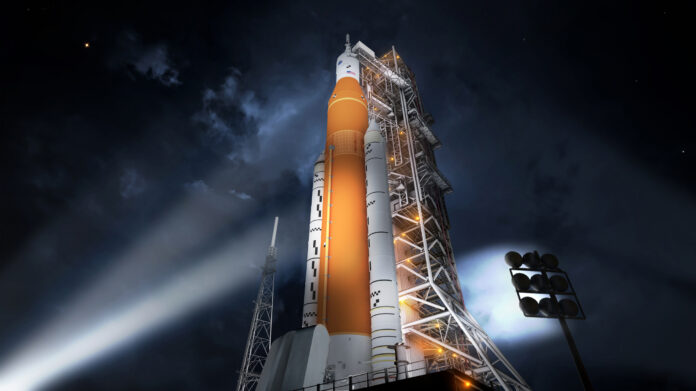The United States space agency has unveiled its new massive moon rocket for the first time.
The vehicle, dubbed the Space Launch System (SLS), was transported to the Kennedy Space Center in Florida for a dummy countdown.
If everything goes well, the rocket will be declared ready for a mission to orbit the Moon with an uncrewed test capsule.
This could occur within the next few months. At some point in the second half of this decade, astronauts are expected to board SLS rockets and return to the Moon’s surface.
SLS is a behemoth. It was meant to be more powerful than the Apollo Saturn vehicles of the late 1960s and early 1970s, standing just under 100 metres tall.
It will have enough thrust to carry astronauts far beyond Earth, as well as enough equipment and cargo for such crews to stay away for long periods of time.
The Crawler Transporter travels slowly, with a cruising speed of slightly over 1 km/h (under 1 mph). Therefore, it took the rocket 11 hours to reach the launch pad, which was 5 kilometres away from the VAB. Engineers checked everything was in working order by stopping and starting the tractor along the way.
SLS will now prepare for a “wet dress rehearsal,” which is expected to take place on April 3rd.
The rocket will then be fueled with propellants and sent through a rehearsal countdown until it reaches 9.4 seconds before lift-off. The “scrub” point occurs immediately before the four large shuttle-era engines under the rocket are generally lit.
Nasa will be able to establish a flight date if all goes according to plan and the engineers are satisfied. While Nasa is working on the SLS, Elon Musk, an American rocket entrepreneur, is working on a much larger vehicle at his Texas R&D center.
According to a recent study by the Office of Inspector General, which audits Nasa programmes, the first four SLS flights will each cost more than $4 billion to complete, a price that has been criticised as unsustainable.




















